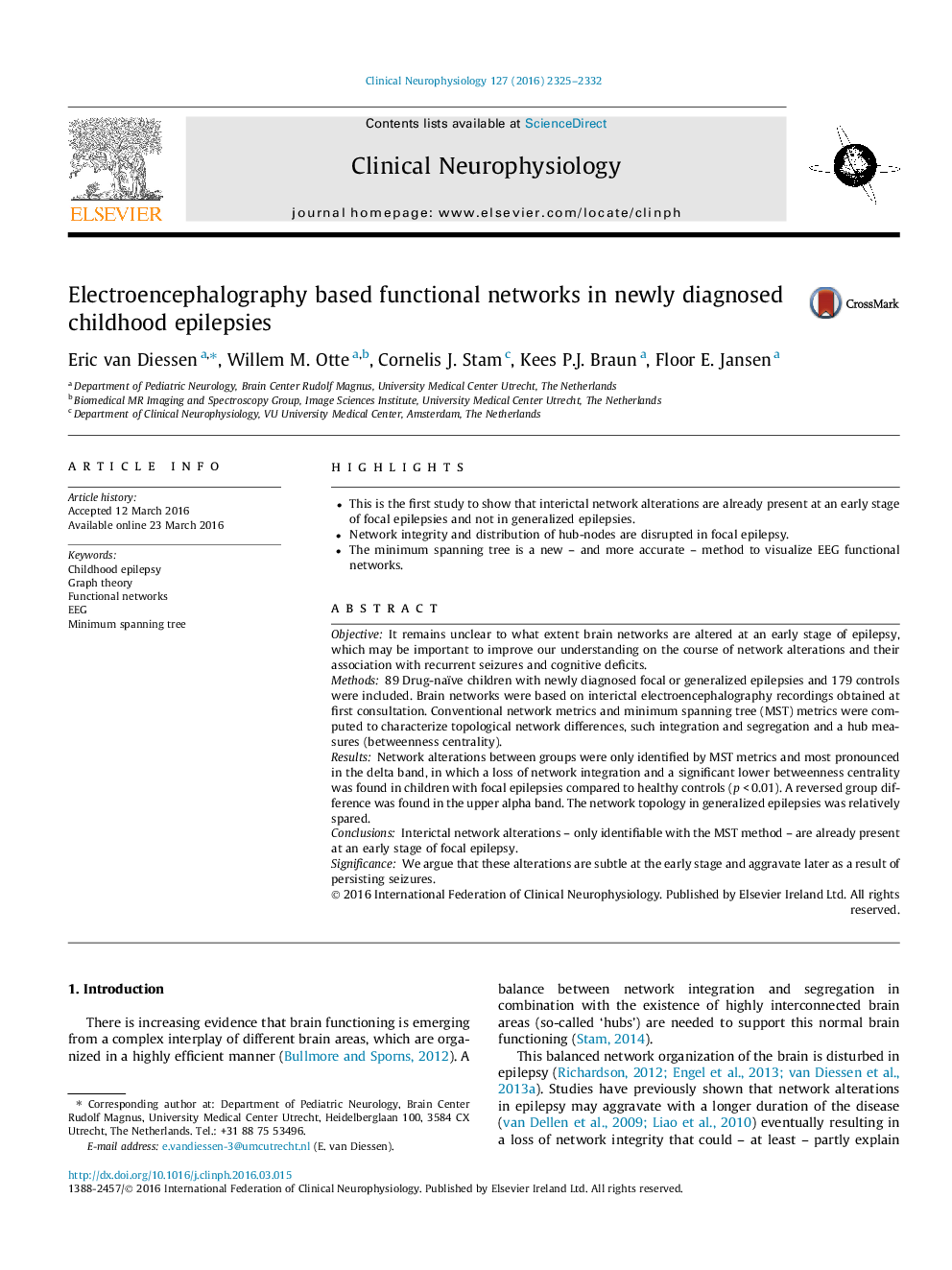| Article ID | Journal | Published Year | Pages | File Type |
|---|---|---|---|---|
| 3042743 | Clinical Neurophysiology | 2016 | 8 Pages |
•This is the first study to show that interictal network alterations are already present at an early stage of focal epilepsies and not in generalized epilepsies.•Network integrity and distribution of hub-nodes are disrupted in focal epilepsy.•The minimum spanning tree is a new – and more accurate – method to visualize EEG functional networks.
ObjectiveIt remains unclear to what extent brain networks are altered at an early stage of epilepsy, which may be important to improve our understanding on the course of network alterations and their association with recurrent seizures and cognitive deficits.Methods89 Drug-naïve children with newly diagnosed focal or generalized epilepsies and 179 controls were included. Brain networks were based on interictal electroencephalography recordings obtained at first consultation. Conventional network metrics and minimum spanning tree (MST) metrics were computed to characterize topological network differences, such integration and segregation and a hub measures (betweenness centrality).ResultsNetwork alterations between groups were only identified by MST metrics and most pronounced in the delta band, in which a loss of network integration and a significant lower betweenness centrality was found in children with focal epilepsies compared to healthy controls (p < 0.01). A reversed group difference was found in the upper alpha band. The network topology in generalized epilepsies was relatively spared.ConclusionsInterictal network alterations – only identifiable with the MST method – are already present at an early stage of focal epilepsy.SignificanceWe argue that these alterations are subtle at the early stage and aggravate later as a result of persisting seizures.
